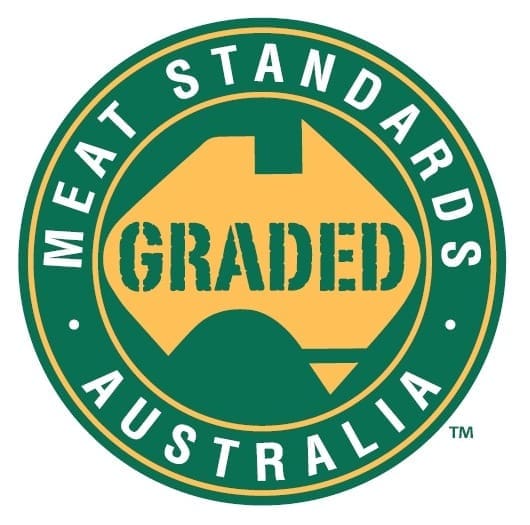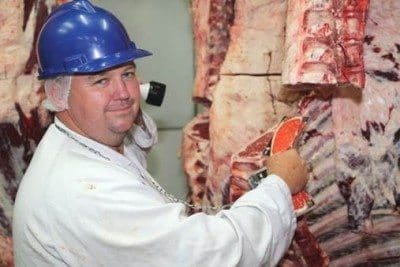THE Meat Standards Australia eating quality program saw a record 3.2 million cattle graded for the 2015 calendar year, records to be released later today show.
 The figure is up a little from 3.175 million head in 2014.
The figure is up a little from 3.175 million head in 2014.
In percentage terms of all cattle processed, MSA graded animals represented 36 percent of all cattle processed last year, up from 34pc in 2014 and 32pc in 2013 when kills were considerably smaller before the onset of drought.
Even with the difficult and variable seasonal conditions in 2015, MSA producers have been able to maintain their grading performance, with compliance results relatively consistent at 93pc nationally during the year to MSA requirements. Within that, grainfed cattle achieved 98pc compliance to MSA specifications, while non-feedlot/grassfed cattle achieved 88pc compliance. MSA requirements relate to MSA carcase compliance to pH, meat colour and fat coverage requirements. They do not include company specifications .
Grainfed cattle represented exactly 50pc of MSA-graded cattle in 2015.
Whilst high pH and/or dark meat colour were again the main reasons for non-conformance, compliance to these specifications improved from 2014. Reflective of seasonal conditions and turn-off stages of cattle, there was a substantial increase in the non-compliance to fat coverage requirements. About 17pc of all non-compliant carcases failed to meet the 3mm rib fat specification.
An additional 6pc of MSA-graded cattle failed to meet company imposed processor specifications, consistent with the previous year, and with little difference in non-compliance to company specifications between grass and grainfed cattle.
“Importantly, the MSA index for beef has now become embedded into the MSA program as a meaningful eating quality feedback measurement for producers. The industry as a whole, recorded improved results despite last year’s difficult conditions,” MSA Program Manager Michael Crowley said.
“The average MSA index in 2015 for all MSA cattle was 57.44 – this is an increase of 0.16 points over 2014 and reflects the ability to continue to improve Australia’s beef eating quality, with an ultimate goal of improving by 2 points by 2020,” he said.
The number of processors licensed for MSA beef last year remained unchanged at 42, however their grading numbers continue to grow.
Mr Crowley said red meat producer registrations in the MSA program also grew in 2015 – up 8pc year-on-year to 43,464, (from 40,260 in 2014) with 60pc of the new registrants being beef producers and 40pc sheep producers. That’s been driven largely by continued support from processors and development of beef and lamb brands underpinning their products with the MSA eating quality system.
$185m delivered in extra farmgate revenue
MSA program data for 2015 being released today by MLA suggests MSA has delivered an additional $185 million in farm gate revenue during 2015 thanks to the price premiums paid for MSA accredited and compliant cattle.

Marty Braddick, chiller assessor at the John Dee processing plant in Warwick, Qld, says it takes about one minute to assess each carcase using MSA
Mr Crowley said even with the increases in cattle prices generally last year, the average price premiums for MSA cattle were maintained.
Different to earlier years, New South Wales reported the greatest average price differential of $0.33/kg, while average differentials of $0.31/kg were reported in Queensland.
On average the carcase weights of grassfed cattle have also increased by nearly 1kg nationally. Non-feedlot young cattle compliant to both MSA and company specifications were able to achieve an additional $88 per head on average across the year, above non-compliant cattle. This equates to over $116 million in additional farm gate returns to grassfed producers throughout 2014-15.
Over the hook differentials for MSA young cattle fluctuated throughout the year, peaking at $0.47/kg mid-year, but on average MSA young cattle were $0.32/kg above non-MSA young cattle during 2015.
MSA was developed by the Australian red meat industry to improve the eating quality consistency of beef and sheepmeat. The system is based on more than 700,000 consumer taste tests by over 100,000 consumers from nine countries and takes into account all factors that affect the eating quality of the 169 cuts and cooking combinations within a carcase.
During 2015, over 1,800 producers were provided the opportunity to learn more about MSA and the MSA index through 44 workshops or information sessions held throughout the country.
Brands and end-users
Development of MSA brands continued with an additional 16 beef and/or lamb brands becoming MSA licensed during 2015. Of these, 15 were beef specific. There are now 134 MSA licensed brands in the market place.
A MSA licensed brand is one that chooses to consistently underpin their brand with MSA grading and standards.
At the end of 2015, almost 3700 end-user outlets (wholesale, supermarket, retail and foodservice) were licensed to carry the MSA trade mark. This was a slight increase from 2014.
Some 1100 independent butcher surveys were conducted throughout the year by Millward Brown. Of these, 64pc sold MSA beef and provided pricing information about MSA and non-MSA beef. This is an increase from 54pc of butchers selling MSA beef in 2014.
About 70pc of butchers surveyed in 2015 also rated their satisfaction with MSA beef as very good to excellent compared to only 51pc satisfaction with non-MSA beef.
More than 700 people employed in the end-user sector participated in MSA training programs last year, both face-to-face and online.
A new interactive e-learning program for registrations and knowledge refreshers was released in October 2015.
2015 key statistics
- 3.2 million cattle graded
- 43,464 registered cattle and sheep producers – up 8pc
- 42 MSA-licensed cattle processing facilities and 20 sheep processing facilities Australia wide
- 48pc of all cattle processed in NSW were MSA graded
- An additional $185 million was returned to farm gates in higher prices paid for MSA young cattle and grainfed cattle
- 56pc of MSA lambs or 3.2 million head formally identified to consumers as MSA product in 2015 – up from 35pc in 2013



HAVE YOUR SAY